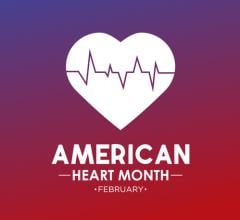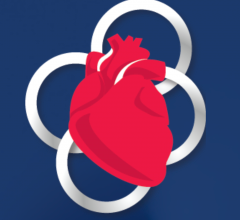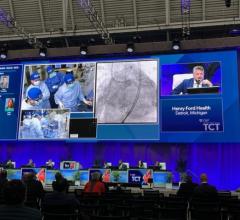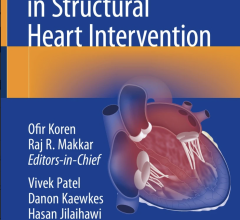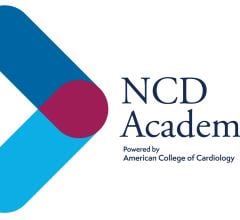
Late-breaking science from a multi-center U.S. trial presented during the International Stroke Conference found that while hospital beds for stroke patients are typically elevated at the head, a flat head position before surgical removal of a blood clot in the brain (thrombectomy) may lead to better outcomes. Results of the ZODIAC trial were shared by researchers on the first day of the American Stroke Association’s ISA 2024 conference which runs through Feb. 9 in Phoenix, AZ. Image courtesy: Getty Images
February 7, 2024 — According to results from a multi-center trial in the United States, called Zero Degree Head Positioning in Acute Large Vessel Ischemic Stroke, or ZODIAC, while hospital beds for stroke patients are typically elevated at the head, a flat head position before surgical removal of a blood clot in the brain (thrombectomy) may lead to better outcomes.
In preliminary late-breaking science presented on day one of this year’s American Stroke Association’s International Stroke Conference, ISC 2024, it was reported that the ZODIAC trial researchers found significant improvements in clinical stability and neurological function for patients with 0-degree head positioning compared to patients with head positioning at a 30-degree angle. This according to a written summary of the data presented Feb. 7, suggests that 0-degree positioning may be an appropriate change to the standard of care for stroke patients before thrombectomy.
A written overview of the findings from AHA/ASA also noted that large vessel occlusion is a type of ischemic stroke involving blockage of a major artery in the brain. A surgical procedure called thrombectomy removes the blood clot to restore blood flow and reduce the risk of death or permanent injury to the brain including a potential loss of neurological function.
“Many thrombectomy patients have delays until the procedure can be started, whether due to slow internal hospital processes, multiple patients arriving at the same time or if the patient needs to be transferred to another hospital,” said lead study researcher Anne W. Alexandrov, Ph.D., a professor of nursing and neurology at the University of Tennessee Health Science Center in Memphis. “Optimizing blood flow to the brain while patients are waiting for surgery, is essential to minimize the risk of neurological deficits and ultimately disability.”
Alexandrov also reported, “Our findings suggest that gravitational force can play an important role in improving blood flow temporarily while patients are waiting for surgery.” She added, “Zero-degree head positioning is a safe and effective strategy to optimize blood flow to the brain until the thrombectomy can be performed, and it should be considered the standard of care for stroke patients prior to thrombectomy.”
Currently, hospital beds for stroke patients awaiting thrombectomy surgery are typically set with the head of the bed at a 30-degree angle, or a slight incline, Alexandrov said. However, pilot studies conducted by Alexandrov’s team have shown that when the head of the bed is flat at 0-degrees, thrombectomy patients benefit from increased gravitational blood flow through the narrowed/blocked artery and more open collateral arteries for the procedure.
Study Details
In this randomized clinical trial, the Zero Degree Head Positioning in Acute Large Vessel Ischemic Stroke or ZODIAC, researchers used the National Institutes of Health Stroke Scale (NIHSS) — which assesses consciousness, vision, speech, motor strength and sensory loss — to evaluate stroke patients with large vessel occlusion acute ischemic stroke. They compared if patients’ conditions remained stable or worsened depending on whether they were set with 0-degree head positioning vs. 30-degree head positioning before thrombectomy surgery. The study included 92 patients from 12 stroke centers in the U.S.
Stroke patients’ baseline NIHSS scores were measured at 0-degrees immediately after neuroimaging, then they were randomly positioned to head positioning at either 0-degrees or 30-degrees. Patients underwent repeat NIHSS scoring every 10 minutes until the thrombectomy was performed, with a final NIHSS score assessed immediately before they were positioned on the surgical table.
An interim analysis found that 0-degree head positioning before thrombectomy surgery resulted in greater stability and/or clinical improvement prior to surgery based on repeated NIHSS scores in stroke patients compared to patients with 30-degree head positioning.
The investigators also explored whether there would be differences in the NIHSS score at 24 hours following surgery and at 7 days or discharge (whichever came first), however, they didn’t expect to find a difference because thrombectomy itself dramatically improves patient outcomes. They were surprised to find that at both 24 hours after surgery and at 7 days after discharge, the 0-degree-head-position patients had less neurological deficits on the NIHSS compared to patients with head-positioning at a 30-degree incline before surgery.
“By three months following surgery, there was no difference in outcomes for patients in either group, however, it’s exciting to see that we were able to discharge patients from the hospital with less disability requiring rehabilitation,” Alexandrov said. She further noted that 0-degree head positioning is NOT a treatment for stroke; it is a way to preserve brain function by optimizing blood flow until the thrombectomy can be performed, and said, “It is a rescue maneuver, not a treatment.”
Due to the efficacy of 0-degree head positioning for stroke patients awaiting thrombectomy, the study’s Data and Safety Monitoring Board stopped enrollment in this trial on November 1, 2023.
The International Stroke Conference is being held Feb. 7-9 in Phoenix, AZ.
More information: www.heart.org, www.stroke.org
Follow more ISC 2023 news coverage by Diagnostic and Interventional Cardiology here.

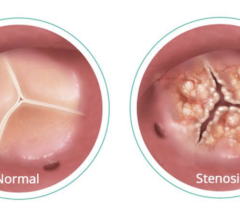
 April 25, 2024
April 25, 2024 

